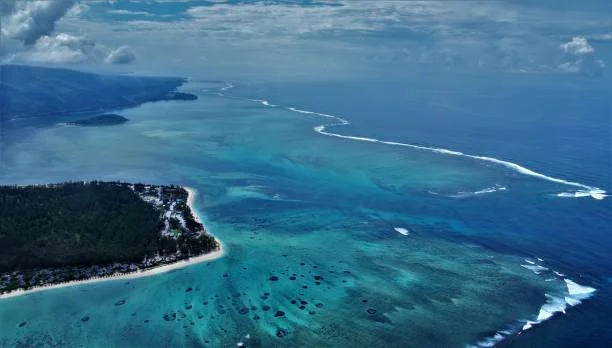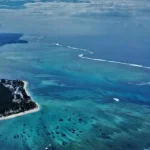There’s something about the Indian Ocean that feels different. Maybe it’s the color, that endless stretch of turquoise that glows even under cloudy skies. Or maybe it’s the rhythm, waves rolling in steady as a heartbeat, carrying stories that have crossed centuries. Whatever it is, this part of the world has a pull that’s hard to describe and even harder to resist.
Stretching from the coasts of East Africa to the islands of Southeast Asia, the Indian Ocean is more than a body of water; it’s a living thread that’s connected people, cultures, and ideas for thousands of years. From Zanzibar’s spice markets to Seychelles’ Creole villages and Madagascar’s diverse communities, these islands form a mosaic of humanity shaped by the sea itself.
So how did a scattering of islands, so far apart, become bound by such a strong cultural current? The answer lies in the tides, the trade winds, and the timeless exchange of people and stories.
Dive into this related post—fresh insights await your next click of curiosity.!
Where Cultures Meet the Sea
Long before airplanes and digital maps, the Indian Ocean was the world’s first great highway. Traders, sailors, and explorers from Africa, Arabia, India, and beyond sailed its waves in search of spices, silk, and adventure. With them came languages, religions, and traditions that would take root on these islands, blending into something entirely new.
You can feel that legacy today. Walk through the narrow alleys of a coastal town, and you’ll catch whispers of different worlds, an Arabic prayer drifting from a mosque, a French phrase over laughter, the beat of African drums in the distance. It’s a reminder that the ocean didn’t separate people; it connected them.
In many ways, the Indian Ocean is a mirror of humanity’s best traits: resilience, adaptability, and curiosity. It’s where cultures didn’t clash but collaborated, blending flavors, faiths, and families into something beautifully complex.
The Indian Ocean: A Tapestry Woven by Time
If you could trace history through sound, the Indian Ocean would hum with a thousand different melodies. From the Swahili Coast to Mauritius, this region’s diversity is both ancient and alive.
Take language, for example. Swahili, spoken across East Africa, carries traces of Arabic, Persian, Portuguese, and Hindi. Creole dialects in Seychelles and Mauritius mix French rhythm with African warmth. Even the food tells a story: coconut curries with Indian spice, rice dishes kissed with saffron and seafood, and tropical fruits grown from soil enriched by volcanic ash.
These islands became crossroads where civilizations met and merged. Architecture reflects it too, arched Arab doorways, colonial-era villas, and brightly painted wooden fishing boats that still sail the same routes as their ancestors.
Here, the ocean wasn’t a border. It was a bridge.
Zanzibar: The Spice-Scented Storyteller
Zanzibar might be one of the most enchanting chapters in that story. Just off Tanzania’s coast, this island once pulsed at the center of the global spice trade. Traders from Oman, India, and Africa turned it into a melting pot of cultures, and their influence lingers in every corner of Stone Town.
Walk its streets, and your senses come alive. The air smells like clove and nutmeg. Ornate doors carved with Arabic motifs guard cool courtyards. Children play soccer in alleys where coral-stone walls glow gold in the afternoon light.
Zanzibar’s beauty lies not only in its beaches but in its stories. The mix of languages, music, and religion creates a harmony that feels effortless. You might find yourself listening to the muezzin’s call to prayer one moment and dancing to Taarab music the next.
It’s this fusion, the ebb and flow of people and ideas, that makes Zanzibar feel timeless. It’s not just an island; it’s an archive of the ocean’s cultural heartbeat.
Seychelles: Creole Culture and Coastal Harmony
Head north across the ocean, and you’ll reach the Seychelles, a string of granite and coral islands that seem painted by a dream. But there’s more here than picture-perfect beaches. The Seychelles have their own unique rhythm, rooted in the harmony of cultures that have coexisted for centuries.
Creole culture defines the islands. It’s in the language, the music, the cuisine. It’s in how Seychellois people tell stories through rhythm and movement, often around bonfires on the beach. You’ll find curries flavored with cinnamon and chili, folk songs blending African beats with French melodies, and a community that feels deeply connected to both land and sea.
And the best way to experience that connection? From the water itself. Exploring the islands on a small boat cruise to Seychelles gives travelers a rare glimpse into local island life, from fishing villages where Creole music fills the air to uninhabited coves where time seems to stand still.
It’s the kind of travel that reminds you why slowing down matters. Here, luxury isn’t about excess. It’s about simplicity, salt on your skin, laughter over shared meals, and sunsets that feel like they were painted just for you.
Madagascar and Mauritius: Islands of Evolution and Expression
Travel farther south, and you’ll find Madagascar, a place so biologically and culturally unique, it feels like its own planet. The island’s people trace their ancestry to both Southeast Asia and Africa, creating a blend unlike anywhere else on Earth.
You can hear it in their music, see it in their crafts, and taste it in their food. Malagasy traditions celebrate community and respect for nature, with songs and dances that honor ancestors and the environment alike. The island’s biodiversity mirrors its cultural richness, lemurs leap through rainforests while fishermen still use handmade pirogues along the coast.
Mauritius, by contrast, offers a more cosmopolitan kind of magic. Indian temples stand beside French patisseries; African drumming meets sega dance at beach festivals. It’s a place where diversity isn’t just accepted, it’s celebrated daily, woven into the nation’s identity.
Both islands prove that heritage doesn’t have to be preserved in glass cases. It lives in laughter, flavor, and rhythm, passed down through generations like heirlooms made of sound and color.
Preserving Heritage in a Changing World
But even paradise faces challenges. Globalization and mass tourism bring both opportunity and risk. While the world’s growing curiosity about these islands fuels their economies, it can also threaten the very traditions that make them special.
Thankfully, local communities are finding balance. Heritage festivals in Seychelles, cultural tours in Zanzibar, and conservation programs in Madagascar are helping protect both the environment and the stories tied to it.
Visitors, too, have a role to play. Choosing local guides, respecting cultural norms, and supporting small businesses can make a world of difference. Travel, when done thoughtfully, becomes a partnership, a way of preserving what’s precious while sharing it with the world.
After all, isn’t that the point of travel? Not to consume, but to connect?
The Shared Soul of the Islands
When you step back and look at the Indian Ocean as a whole, it’s astonishing how much unity exists in its diversity. Different languages, religions, and histories all flow together like currents meeting at sea. Each island has its own story, yet somehow they all sing in harmony.
It’s a region where community still means something. Where hospitality isn’t a performance, but a way of life. Where you’re not just a visitor, you’re part of the ongoing story of people who’ve lived with the sea for generations.
What ties it all together is the idea of connection. Between islands. Between cultures. Between people and the planet.
So whether you’re wandering through Zanzibar’s spice markets, dancing to Creole rhythms in Seychelles, or watching the stars reflect off Madagascar’s waters, remember this: the Indian Ocean isn’t just a destination. It’s a dialogue between past and present, between nature and humanity.
Every wave carries a story. Every island, a song. And together, they form the chorus of one of the most fascinating regions on Earth.
�� Final Thoughts
The Indian Ocean islands are living testaments to the power of connection, proof that cultures can blend without losing their essence, and that heritage can thrive even in modern times.
For travelers, the reward isn’t just in the scenery (though it’s breathtaking). It’s in the understanding you gain that beauty isn’t just in the landscape, but in the people who call it home.
So next time you dream of turquoise seas and golden sands, think beyond the postcard. Think of the centuries of stories that shaped these islands, and the generations still carrying them forward.
Because here, on the edge of Africa and the heart of the ocean, you don’t just find paradise, you find perspective.
Don’t miss this featured post—insightful content designed to inspire your step.







